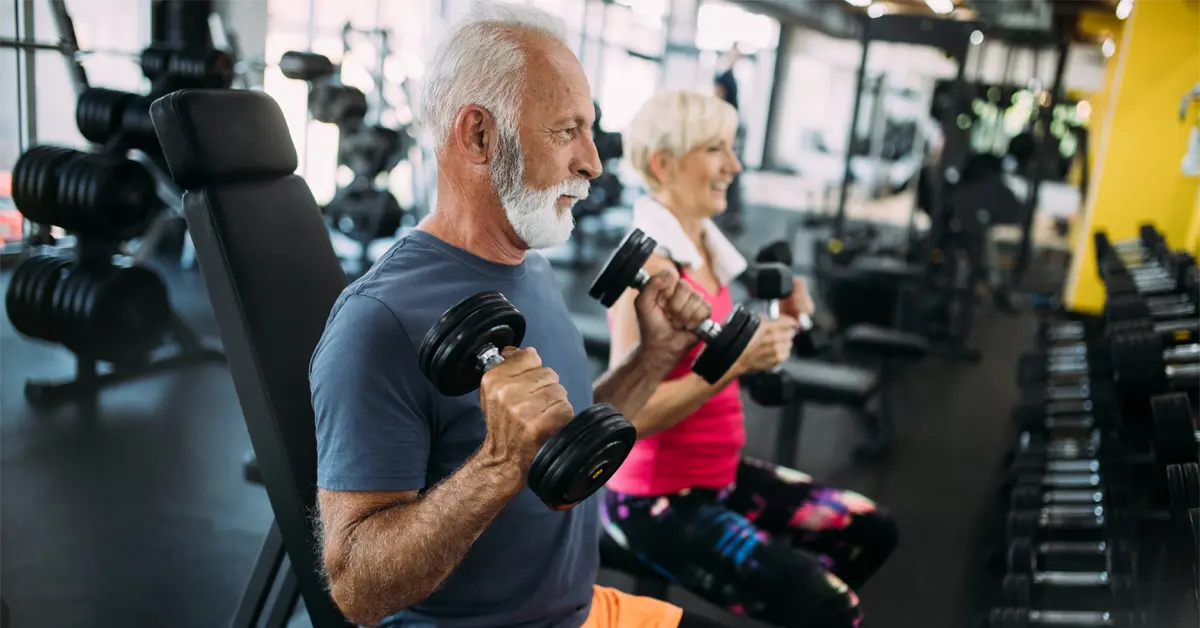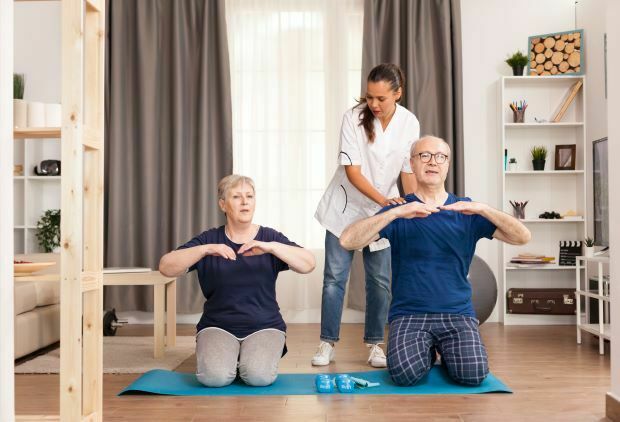It’s never too late to start getting in shape, regardless of your age or physical condition. These simple guidelines will help you get started:
1. Focus on your goal.
Staying motivated and on track requires a primary reason you want to improve and maintain your health, and it must be emotional and goal-oriented. It can’t just be, “I’m going to the gym because it’s probably beneficial for me.” Remind yourself why you are doing it.
2. Make improvements to your surroundings to encourage healthy behaviors.
Your capacity to maintain healthy habits is greatly influenced by your surroundings. The more stable your surroundings are, the more likely you are to achieve your health objectives. Creating a consistent meal prep or meal planning routine, having a regular workout, and avoiding having a treat or snack items in the house are all examples of this. All of these minor changes to your surroundings add up to reinforce your healthy habits.
3. Do what you love to do.
If you find an activity or multiple hobbies you enjoy, you’ll be much more likely to stick to an active habit in the long run. There’s no reason to feel obligated to go to the gym if it’s not your thing. Other activities include racket sports, swimming, tai chi, and yoga. Find something you enjoy doing, and you’ll be more likely to stick with your goals.
4. Listen to your body.
Exercise should never be painful or unpleasant. If you feel dizzy or short of breath, develop chest pain or pressure, break out in a cold sweat, or suffer pain, stop exercising immediately and call your doctor. If a joint is red, swollen, or sore to the touch, stop doing what you’re doing—the best method to deal with injuries is to avoid them in the first place. If you have pain or discomfort after exercising, try exercising for shorter periods but more frequently throughout the day.
5. Start slow and build up steadily.
If you haven’t been active in a while, gradually increase your exercise routine. Try doing ten-minute interval workouts twice a day. Alternatively, attempt only one weekly lesson and then build up to more. If you’re worried about falling or have a heart condition, begin with simple chair exercises to gradually improve your fitness and confidence.
6. Maintain a consistent schedule.
There is no set amount of exercise you should do because it depends on your present level of fitness and health, your fitness goals, and whether you have any health issues. However, generally speaking, 150 minutes of moderate or 75 minutes of vigorous aerobic activity each week, with each session lasting at least 10 minutes, can provide significant health advantages.
7. Keep it interesting.
If you’re bored with your current routine, try something different. Some individuals believe they should only do activities designed for seniors, but if you are capable of safely practicing more demanding forms of exercise, you should do so. An aerobics class, cycling, swimming, or dance could all be options. Gardening, vehicle washing, hiking, golf, cricket, walking up and down the stairs, or briskly walking the dog are all examples of physical activity. Consult your doctor if you have any worries about what you can safely perform.
8. Try something new.
You may find your workouts get too comfy after exercising frequently. This can signify that it’s time to ramp up the intensity. Increase the number of sets or reps you do, or find a somewhat more strenuous approach to get your heart beating. Make sure your routines are still demanding.
9. Reward yourself.
Reward yourself for completing an exercise, achieving a new fitness goal, or simply showing up on a day when you were tempted to skip your routine. Choose something you enjoy but don’t allow yourself to do it until after you’ve exercised, such as a hot bath or a cup of your favorite coffee.
10. Keep track.
Health wearable devices consist of electronic gadgets worn on the body during workouts, such as smartwatches. These technological devices allow you to view the results of your actions by using a fitness app to track your progress. Calories burned, heart rate, and time spent working out is all tracked via wearable technology. It is a dependable way to monitor your health improvement and performance during workouts. You may also ask your healthcare provider about remote patient monitoring service, a modality of telehealth that allows you to send health data captured through your home monitoring device to your healthcare provider.
It is challenging to start or maintain a regular fitness regimen at any age, and it does not get any simpler as you get older; hence following some tips may help you. Good luck on your fitness journey!








